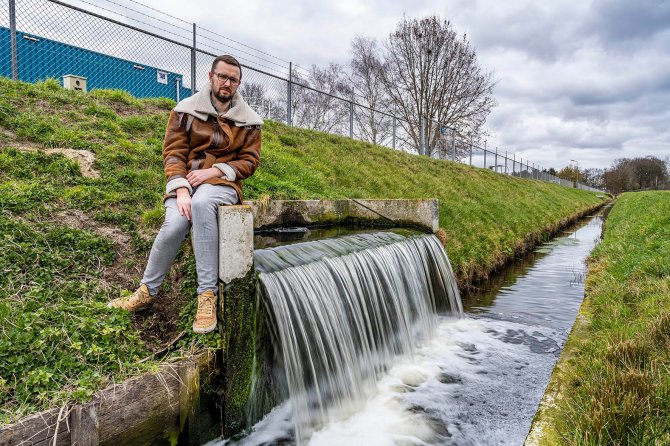Nieuws
Four million euro for new research on improving fresh water vailability in coastal areas
The ETE program AquaConnect, with Prof. Huub Rijnaarts as project leader, has received 4 million euro from NWO-Perspective. Companies and other organizations add an additional 2 million euro. The program is aimed at safeguarding the fresh water supply in coastal areas with water shortage by using alternative water resources. ‘Better water reuse and the use of nonconventional water resources helps us to increase fresh water reserves, that can be utilized during summer draughts’, says Thomas Wagner, coordinator of the application and start-up phase.
During summer draughts, The Netherlands are regularly faced with fresh water shortage. A smarter use of the available water resources could prevent this. For example, wastewater treatment plants currently discharge their treated water in rivers, while during draughts, this water could better be retained and utilized.

‘In the Netherlands we are true champions in discharging water’, Wagner says. ‘But now we have to retain and efficiently redistribute water during dry periods to avoid water shortage.’
Flexible water treatment technologies
AquaConnect will perform multi-disciplinary research to increase fresh water reserves in coastal areas. The program aims to develop new and more flexible water treatment technologies, better aimed at the water quality needed by the different end users. For example, drinking water needs to be of the highest quality, while water of a lower purity can be used by industries. Such new technologies include membrane-based water treatment systems. They are more flexible and robust as compared to the traditional biological treatment methods and may as such be better suited to supply water of different qualities.
Safe water supply
To achieve a circular water system where pollutants are not accumulating, risk assessment is an important aspect of the program: what contaminants are present in the untreated water and which ones have to be removed for the specific user? ‘Water treatment plants produce almost clean water, that is discharged at the surface water’, Wagner explains. ‘However, we know it still contains micropollutants that need to be removed if we want to use it as drinking water.’

Efficient distribution
In addition to risk assessments, digital, so-called, smart grids, will be designed to assess and monitor the available water as well as the different qualities by water suppliers. Water storage sites are also an important part of these smart grids. This supply will be matched with the demand of different users, enabling an efficient distribution and reuse of available water.
Negative perception
In addition to developing different technologies, also the more social aspects will be addressed. Are there any legal obstructions for water reuse and how can these be solved? For example, treated water from wastewater plants is forbidden by law to be used in agriculture, despite its relatively high cleanliness. Also, consumers may have a negative perception of treated waste water suitable for drinking, even when there is no health risk at all.
Brackish water problem
As final result of AquaConnect, there will eventually be 4 demonstration sites, that illustrate the efficient use of alternative water resources in a different context. One of the sites is planned in the Province of Zeeland, where there is a brackish water problem, while another site will be built near Amsterdam, for a completely different array of city-associated challenges.
‘All this can only be realized by looking at the complete water chain. Therefore, we are closely collaborating with other universities, regional water authorities, drinking water and technology companies and governments’, Wagner says. ‘By combining water treatment technologies, digital technologies and knowledge about the social aspects we can effectively improve fresh water reuse and storage to avoid water shortage during the summer.’